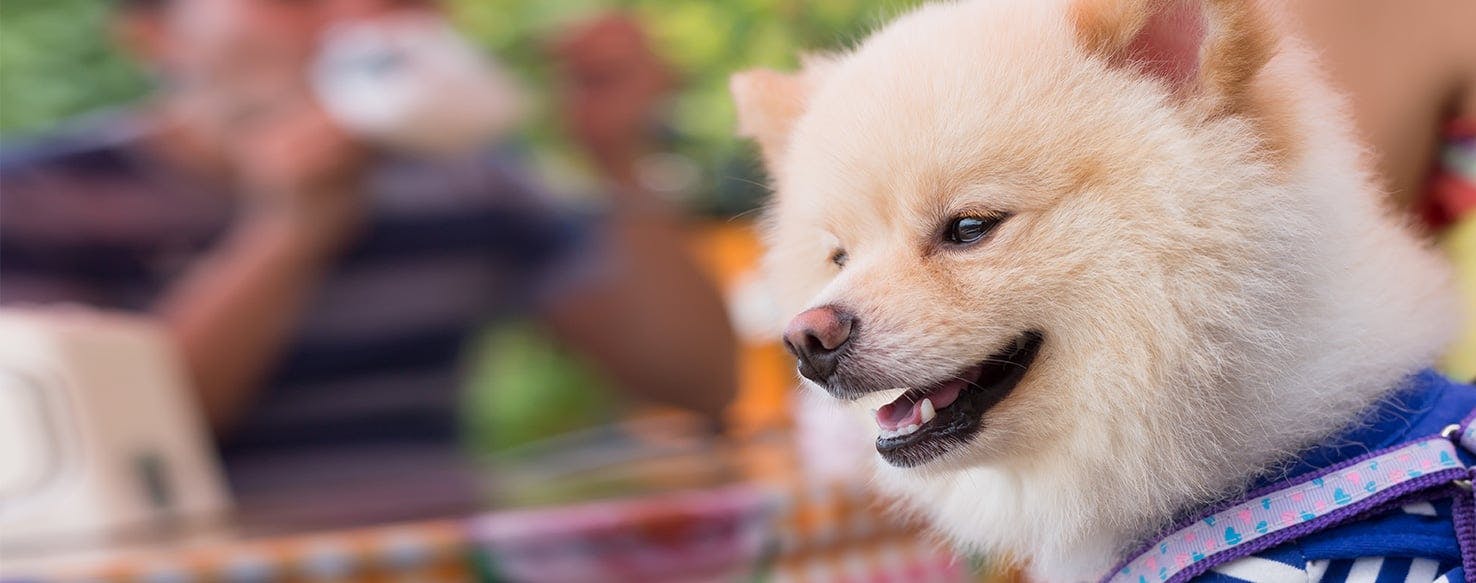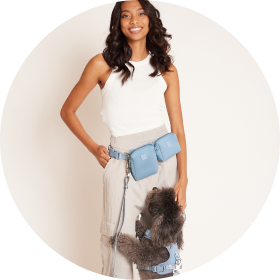- Home
- The Daily Wag!
- Senses
- Can Dogs Have Gelatinous Food?

If you've ever had the urge to share your wobbly, delicious, sugary jello treat with your pup, we advise you to put the spoon away, and put the extra-shaky dessert in the fridge, because your dog should not, under any circumstances, eat jello. That being said, though, your dog can certainly have specific kinds of gelatinous foods.
Gelatin is actually pretty good for your dog, on its own. It's about 99 percent pure protein, though it is missing some essential amino acids. Jello itself is not a good choice because of the artificial sweeteners in it, like xylitol, that can be toxic to pups.
Gelatinous foods, however, can be a solid choice. Derived from the cartilage, bones, and animal product, gelatin can be a solid source of protein for pups to have in their diets. Want to know more about gelatin? Want a better idea of what sort of foods you can feed your pup, as well as how to train your dog to add gelatin to their diets? Read on!
While gelatin on its own can be a healthy treat to give your pup, some of the foods that gelatin come in can be exceptionally dangerous for your doggo - we're talking of course about Jello. Although a tasty, low-calorie treat for you, due to the artificial sweeteners contained in most jello (like xylitol), this treat is incredibly dangerous for your pup.
If your pup gets into your jello, it's possibly he or she could be subject to xylitol poisoning. Some of the signs of this include things like vomiting, weakness, and lack of coordination. You'll find that your dog will probably have a hard time walking, standing, and even face systemic depression and lethargy. You can except your dog to have tremors, seizures, and even, in severe cases, coma.
Body Language
Here are a few signs your dog might have xylitol poisoning if he or she ingests too much jello:
- Cowering
- Panting
- Pacing
- Weakness
- Body Freezing
- Twitching Whiskers
- Lack Of Focus
- Ears Back
Other Signs
Some signs that your dog may benefit from gelatin on its own include:
- Poor Bone And Joint Health
- Gut Issues
- Weight Loss Issues
- Liver Issues
- Bad Sleeping Habits
- Bad Memory Or Brain Function
- Dry Skin Or Hair
One of the most common gelatinous foods is jello, and while it's a tasty treat for you with lots of benefits, it's a dangerous game to gift some to your dog. The reason is, jello typically contains the artificial sweetener xylitol, which is unsafe for your pooch.
Xylitol is extremely toxic for your dog and even small amounts of it can cause hypoglycemia, seizures, liver failure, and death. So, what is it about xylitol that is historically bad for dogs? Xylitol stimulates the release of insulin in pups' pancreases where it's quickly absorbed into their bloodstreams. This rapid release can cause a profound decrease in the level of blood sugar, which is a fast-acting process that can affect your dog almost immediately.
Gelatin is an edible substance that's made from animal by-products like skin, tendons, bones, and cartilage. It's a natural part of your dog's diet and even is included in a lot of dry and wet foods. Gelatin can prevent arthritis for your dog, keep their brain healthy, and give them healthy skin and fur.
Adding gelatin to your doggo's diet can be a great way to help them gain a little weight, boost their appetite, and provide them with lots of healthy benefits. When feeding your dog gelatin, ensure that there's no sugar or artificial sweeteners added.
As we stated before, gelatinous food can be a great boost to your pup's diet. At 99 percent protein, this almost purely protein product can help remedy join and bone issues, brain and memory problems, hair and skin issues, and liver problems, too.
In fact, gelatin can be endlessly great for your pooch! Adding it to his or her diet could be wildly beneficial to their health. But, how do you train your dog to eat gelatin?
If you have a picky dog, consider dripping gelatin over their dry food to make the food into a bit of a mush. If you want to give your dog an extra-motivating shove toward eating gelatinous foods, then consider gifting your dog wet food that's mixed with gelatin, too.
Of course, you'll want to make sure you're simultaneously training your dog to eat only the foods you're granting them. That being said, ensure that you're not leaving food around the house for your dog to find, don't allow your dog to roam the house when you're not home, and make sure your dog has a firm grasp on "no," "drop it," and "leave it."
As usual, train your dog to stay out of the area where you prepare and store food to avoid any kind of incident.
Have questions or concerns about your pet?
Chat with a veterinary professional in the Wag! app 24/7.
Get Vet ChatSafety Tips When Feeding Your Dog Gelatin:
- Never let your dog roam the house while you're gone lest they get into your gelatinous food supplies.
- Only feed your dog approved gelatinous foods (not jello).
- Do not let your dog free eat from your plate.
- Make sure your dog understands "no" and "drop it".
- Do not leave food laying around the house for your dog to get into, especially jello.
Written by a Great Dane lover Hanna Marcus
Veterinary reviewed by:
Published: 04/19/2018, edited: 04/06/2020
More articles by Hanna Marcus

